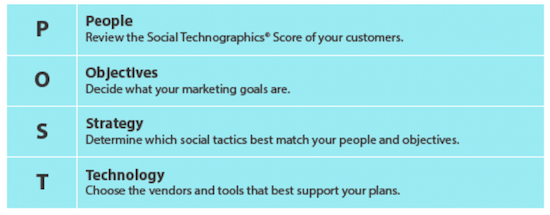The stormy progress social media have made and are still making in the world around us and in business in particular, has intrigued me to a great extent for a considerable length of time now. As I believe my earlier posts have underlined, I am a firm believer in its value in amongst others communications, market understanding, lead generation, recruitment and innovation. At the same time, I am often puzzled by the way corporations and professionals use social media. As a kind of 21st century goldrush, some people seem to think that as long as you’re on Twitter, LinkedIn and Facebook you’re cool and new crowds of people will instantly flock as followers in your path. I have spent considerable time on Tweetdeck or Hootsuite staring at the timelines and profiles of some companies and individuals that have either been set up months ago and show many a sign of degradation or standstill, or boast an impressive number of 20,000+ followers per individual twitter-adept. As if number of followers has new business meaning and value per se, as Social Media Today already reflected on in their post.
Surveys across the globe at the same time show business decision makers in marketing and beyond firmly believe in the value of ‘going social’. Social marketing budgets are constantly going up, says ‘The CMO Survey’. At the same time, as my observations based on a daily perusal of various blogs, vlogs and other communities over the past several months or so show, businesspeople still do not know where to start their social journey, what good or not so good practices are, and what the actual return on investment looks like.
What would bring really differentiating quality to the field of social media marketing and how could one best assess its ROI? End of 2009 this inspired me to testing the ‘PhD waters’ at my ‘old’ university, the State University in Groningen, the Netherlands. I was wondering whether one would be supportive of a PhD assignment in which to assess the ROI of social media in B2B. Prof.dr. Peter Verhoef and dr Jelle Bouma confirmed the market potential for a similar venture and applauded my initiative, yet equally stressed its long term nature and the many many hours away from loved ones, hobbies and family. These aspects and perhaps even more the dynamic nature of SMM & web 2.0 vis-à-vis the six or seven years of a PhD trajectory lead me to the belief this would not be my cup of tea – in this lifetime.
Yet the feeling the field of SMM/ social media marketing would benefit from further business-relevant study remained. Inspired by an intensive dialogue with people like Rijn Vogelaar, Frank Sibbel, dr Sonja Gensler and several other marketeers, business people and other 2.0 thinkers the foundation was laid for the first intensive SMM / Social Media Marketing ROI Benchmark Study, set up in close collaboration with Calibrero’s Ewald Jozefzoon.
The Study’s objectives are threefold and include a (proper) assessment of good (and not so good) SMM/ social media marketing practices, the establishment of a baseline per participating company as well as a proper assessment of the actual ROI over time. I will be happy to keep you abreast of relevant developments inasmuch as the participants allow us to publish to a wider audience.
As we expect the number of SMM early adopters per market segment to be relatively low, I am curious about whether (which of) my personal hypotheses will hold true (and I would kindly like to invite you to add your views as well as add any fresh hypotheses of your own):
– Despite the allegedly better potential in B2B, the B2C uptake will be biggest
– Most SMM initiatives have started bottom-up thru the ranks or outside-in thru a 3rd partner or consulting firm
– The approach is still relatively operational to tactical with much emphasis on tools and 1.0 publishing and ‘shout-outs’ rather than new listening and proper dialogue based on a SMM strategy, new insights and clear objectives
– In those companies that have started their SMM roadmap small, with senior management and multi-disciplinary involvement rather than communications or marketing alone, both its sustainability and measurable ROI are bigger
– Organisations with an Anglo-Saxon culture and background will be swiftest in SMM deployment, quite possibly also in reaping its benefits
– Those organisations with a long term attitude to 2.0 will be better rewarded by their customers in terms of higher customer satisfaction rates and more (renewal) business
– Although the Study itself will predominantly take a horizontal approach, it will be interesting to assess or view any vertical differences that may exist. To my mind, there will be no significant differences (yet) or (should I say like-for-like difference) in the kind of best practice that players across several market segments are in the process of deploying. However I do expect there to be clear front-runners per verticals or sector in terms of their approach and tangible ROI.
Time will tell. And hopefully you as well. I look forward to seeing your builds to these thoughts and a fruitful Study over the next several months.





